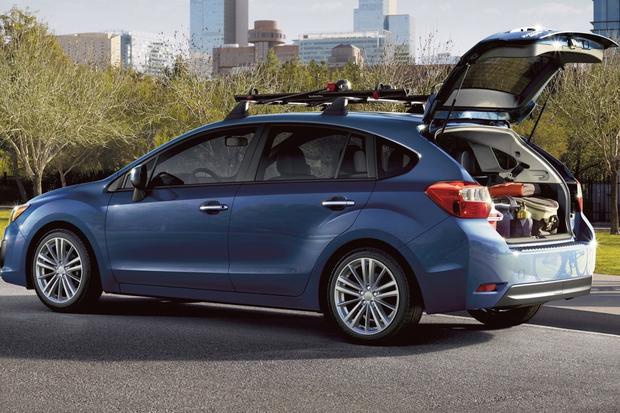2017 Mazda3 colour options - Hello friend Car Review,In the article that you read this time with the title 2017 Mazda3 colour options, we have prepared this article well for you to read and take information in it. hopefully the post content Article2017, Articlecolour, ArticleMazda3, Articleoptions, what we write can you understand. alright, happy reading.
Judul : 2017 Mazda3 colour options
link : 2017 Mazda3 colour options
2017 Mazda3 colour options

Mazda Motor Corporation typically called simply Mazda, is usually a Japanese multinational automaker operating out of Fuchu, Aki District, Hiroshima Prefecture, Japan.In 2015, Mazda produced 1.5 million vehicles for global sales, the vast majority of which (nearly a million) were stated in the company's Japanese plants, using the remainder from the variety of other plants worldwide. In 2015, Mazda was the fifteenth biggest automaker by production worldwide.Mazda began as being the Toyo Cork Kogyo Co., Ltd, founded in Hiroshima, Japan, 30 January 1920. Toyo Cork Kogyo renamed itself to Toyo Kogyo Co., Ltd. in 1927. In the late 1920s the business had to be saved from bankruptcy by Hiroshima Saving Bank as well as other business leaders in Hiroshima.In 1931 Toyo Kogyo moved from manufacturing machine tools to vehicles together with the introduction with the Mazda-Go autorickshaw. Toyo Kogyo produced weapons to the Japanese military during the entire Second World War, that include the series 30 through 35 Type 99 rifle. The company formally adopted the Mazda name back in 1984, though every automobile sold right from the start bore that name. The Mazda R360 has been available since 1960, then the Mazda Carol in 1962.Mazda Cosmo SportBeginning inside the 1960s, Mazda was inspired through the NSU Ro 80 and chose to put a serious engineering effort into development on the Wankel rotary engine as a means of differentiating itself off their Japanese auto companies. The company formed a company relationship with German company NSU and began using the limited-production Cosmo Sport of 1967, and continuing to the current day with all the Pro Mazda Championship, Mazda is just about the sole manufacturer of Wankel-type engines with the automotive market, usually by way of attrition (NSU and Citroën both lost the fight on the design throughout the 1970s, and prototype Corvette efforts by General Motors never made it to production.This effort to take attention to itself apparently helped, as Mazda rapidly begun to export its vehicles. Both piston-powered and rotary-powered models made their way world wide. The rotary models quickly removed for their mix of good power and lightweight weight in comparison with piston-engined competitors that required heavier V6 or V8 engines to make the same power. The R100 as well as the RX series (RX-2, RX-3, and RX-4) led send out export efforts.During 1968, Mazda started formal operations in Canada (MazdaCanada) although Mazdas were affecting Canada as soon as 1959. In 1970, Mazda formally entered the American market (Mazda North American Operations) and was very successful there, going in terms of to create the Mazda Rotary Pickup (based around the conventional piston-powered B-Series model) solely for North American buyers. To this day, Mazda continues to be only automaker to own produced a Wankel-powered pickup. Additionally, it is additionally the only marque to own ever offered a rotary-powered bus (the Mazda Parkway, offered only in Japan) or station wagon (inside RX-3 and RX-4 lines for many markets). After nine numerous years of development, Mazda finally launched its new model from the U.S. in 1970.Mazda's rotary success continued before onset on the 1973 oil crisis. As American buyers (and also those in other nations) quickly considered vehicles with better fuel efficiency, the relatively thirsty rotary-powered models started to fall out of favor. Combined with being the least-efficient automaker in Japan (regarding productivity), inability to accommodate excess inventory and over-reliance around the U.S. market, the business suffered a huge reduction in 1975. An already heavily indebted Toyo Kogyo was about the verge of bankruptcy and was just saved with the intervention of Sumitomo keiretsu group, namely Sumitomo Bank, plus the companies subcontractors and distributors. However, this company had not totally turned its back on piston engines, since it continued to generate a various four-cylinder models during the entire 1970s. The smaller Familia line particularly became vital to Mazda's worldwide sales after 1973, as did the somewhat larger Capella series.Mazda RX-7 (first generation)Mazda refocused its efforts making it the rotary engine a choice for that sporting motorist as opposed to a mainstream powerplant. Starting with all the lightweight RX-7 in 1978 and continuing with all the modern RX-8, Mazda has continued its dedication for this unique powerplant. This switch in focus also resulted from the development of another lightweight fancy car, the piston-powered Mazda MX-5 Miata (sold as being the Eunos and then Mazda Roadster in Japan), inspired with the concept 'jinba ittai'. Introduced in 1989 to worldwide acclaim, the Roadster may be widely credited with reviving the concept from the small racecar after its decline inside late 1970s.
Related Images with 2017 Mazda3 colour options
Mazda Mazda3 Reviews, Prices and Pictures U.S. News \u0026 World Report

2018 Mazda RX7 Top Speed

Are Mazda Suv Good Cars 2017, 2018, 2019 Ford Price, Release Date, Reviews

After I originally commented I clicked the -Notify me when new comments are added- checkbox and now every time a comment is added I get four emails with the same comment. Is there any means you may take away me from that service? Thanks! online casino slots
BalasHapus